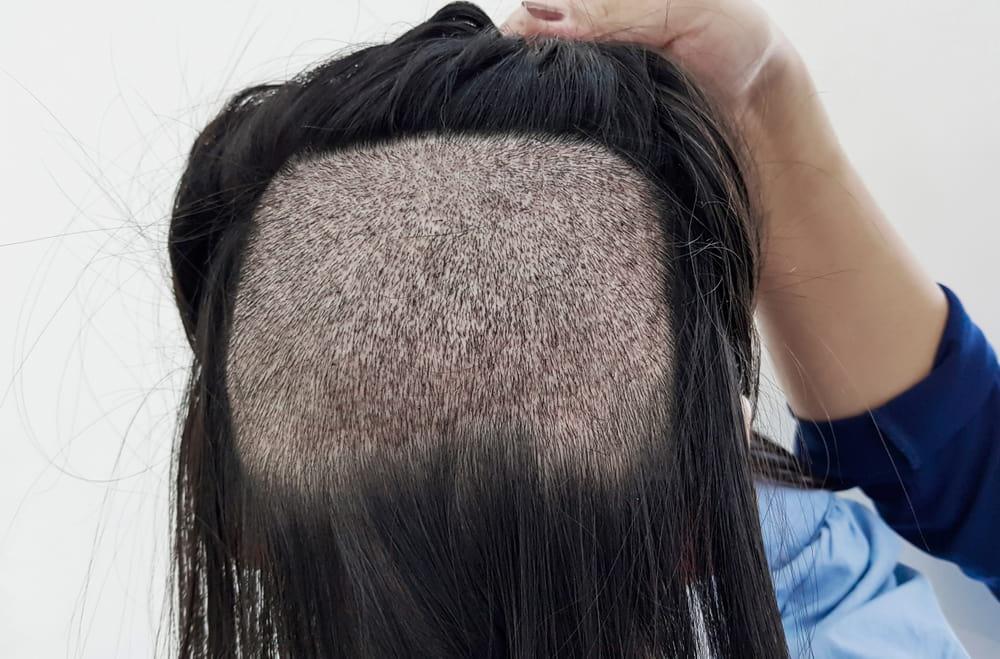
How Long Do I Wait After a Transplant to Color My Hair?


Undergoing a hair transplant is a big decision, and post-operative care plays a crucial role in ensuring successful results. Among the many questions that arise during the recovery process, one common concern is when it’s safe to resume coloring your hair. In this guide, we’ll explore the mechanics of a hair transplant, the recovery timeline, and when it’s safe to reintroduce hair coloring into your routine after your transplant.
Hair transplants are surgical procedures designed to address hair loss by relocating hair follicles from a donor area to thinning or balding areas. At Bangkok Hair Clinic, we offer three primary types of hair transplants:
FUE non-shaven hair transplants extract individual follicular units directly from the donor area using a small punch tool, leaving tiny, nearly invisible scars. Without the need to shave the entire donor area, the hair on the back of the head remains looking almost normal, with only a few small, easily hidden spots showing you had a hair transplant.

This type of hair transplant offers the highest rate of success. Similar to the non-shaven hair transplant method, it’s faster to perform, as the doctor doesn’t have to carefully extract the hair follicles between existing strands of hair that will hide the transplant.
The latest innovation in the hair transplant industry is also considered the most effective. DHI is a more advanced form of FUE where hair follicles are extracted and implanted simultaneously. It uses a device called a Lion Implanter to graft hair follicles into the areas of hair loss more efficiently than using medical forceps of old. The follicles spend less time out of the body, increasing the procedure’s success rate and leading to faster healing.
Each method offers unique advantages, and the best choice for you will depend on factors such as your hair type, donor area availability, and personal preferences.
Following a hair transplant, it’s essential to adhere to post-operative instructions provided by your surgeon. The initial days and weeks are critical for ensuring graft survival and minimizing complications. Patients are typically advised to avoid vigorous activities, direct sunlight, and certain hair care products during this period.
The recovery process can vary depending on the type of transplant and individual healing factors. However, the following gives an idea of the general timeline:
The scalp may be tender, swollen, and slightly red immediately after the procedure. Patients are usually prescribed medications to manage discomfort and prevent infection.
During this time, the transplanted hair follicles are in a delicate phase of healing. It’s essential to follow post-operative care instructions to the letter to promote proper graft integration and minimize the risk of dislodging them.
By this stage, the transplanted hair follicles have begun to establish themselves in their new location. While the scalp may still be sensitive, most patients can gradually resume regular activities.
Hair coloring can potentially irritate the scalp and affect the healing process. As such, waiting until the scalp has fully healed after a transplant is crucial before considering any form of hair coloring or bleaching.
Typically, patients are advised to wait at least three to six months after a hair transplant before coloring their hair. This timeframe allows the scalp to recover fully and for the transplanted follicles to become firmly established.
However, it’s essential to consult your surgeon before making any decisions regarding hair coloring post-transplant. They can assess your healing progress and provide personalized recommendations based on your circumstances.
At Bangkok Hair Clinic, we understand the importance of comprehensive post-operative care to ensure optimal results for our patients. If you’re considering a hair transplant or have recently undergone the procedure and have questions about post-operative care, we’re here to help.
Contact us today to schedule a consultation with one of our experienced surgeons. We’ll assess your needs, discuss your options, and provide personalized guidance to support you through every step of your hair restoration journey.
Many people may be concerned about hair loss but feel the time isn’t right for a hair transplant. We offer several hair loss treatment alternatives in Thailand that help stimulate hair growth. For example, we offer PRP hair treatment for a reasonable price. PRP is a hair restoration technique that uses concentrated growth factors from your own blood. We also offer Cell Plus Therapy, our newest hair restoration therapy that uses stem cells to stimulate hair growth. Finally, we provide Low-level Laser Therapy (LLLT). This treatment uses low-power lasers to dilate blood vessels and improve circulation in the scalp, thus rejuvenating hair follicles.
By scheduling a consultation at Bangkok Hair Clinic, we’ll help you decide which type of transplant or hair loss treatment is right for you. Schedule your appointment today.